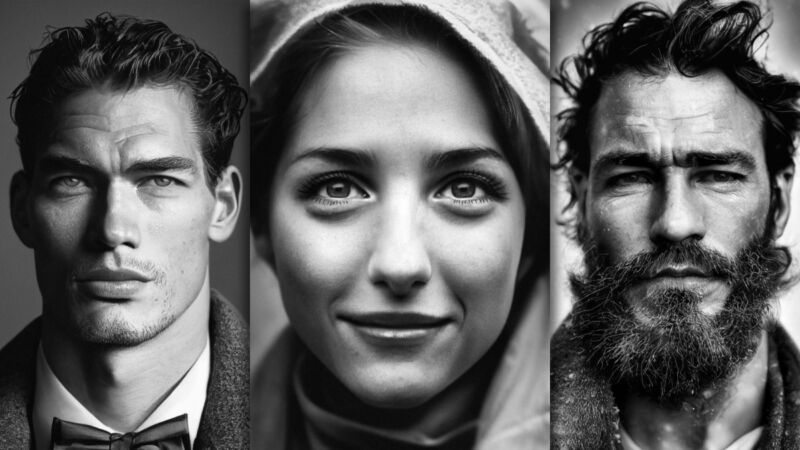
reader comments
165 with
With over 26,000 followers and growing, Jos Avery’s Instagram account has a trick up its sleeve. While it may appear to showcase stunning photo portraits of people, they are not actually people at all. Avery has been posting AI-generated portraits for the past few months, and as more fans praise his apparently masterful photography skills, he has grown nervous about telling the truth.
“[My Instagram account] has blown up to nearly 12K followers since October, more than I expected,” wrote Avery when he first reached out to Ars Technica in January. “Because it is where I post AI-generated, human-finished portraits. Probably 95%+ of the followers don’t realize. I’d like to come clean.”
Avery emphasizes that while his images are not actual photographs (except two, he says), they still require a great deal of artistry and retouching on his part to pass as photorealistic. To create them, Avery initially uses Midjourney, an AI-powered image synthesis tool. He then combines and retouches the best images using Photoshop.
With Midjourney, anyone can pay a subscription fee for the privilege of generating art from text-based descriptions, called “prompts.” Midjourney’s creators taught the AI model how to synthesize images by showing it millions of examples of art from other artists. It can generate stunning photorealistic images that can fool some people into thinking they’re real photos, especially if retouched later.
attracts great controversy in the art world, partly due to ethical issues around scraping human-made artwork without consent. But thanks to that artistic knowledge built into the model, some of the most skilled AI-augmented practitioners can render imagery far more vividly than if a human were working alone.
“I am honestly conflicted,” Avery said when he approached Ars to tell his story. “My original aim was to fool people to showcase AI and then write an article about it. But now it has become an artistic outlet. My views have changed.”
Painted into a digital corner
Soon after Avery’s Instagram feed launched in October, positive comments about his fake photos began pouring in. “All I can say is: Your art is somehow unique, very unique, also very precious; you are actually telling paramount stories to the viewer using your cams,” wrote one commenter four weeks ago. “Setting novel highlights in contemporary photography IMHO! Your work is a great delight to mind and soul.”
Up until very recently, when asked, Avery was either vague about how he created the images or told people his works were actual photographs, even going so far as to describe which kind of camera he used to create them (“a Nikon D810 with 24-70mm lens”). But guilt began to build as his popularity grew.






